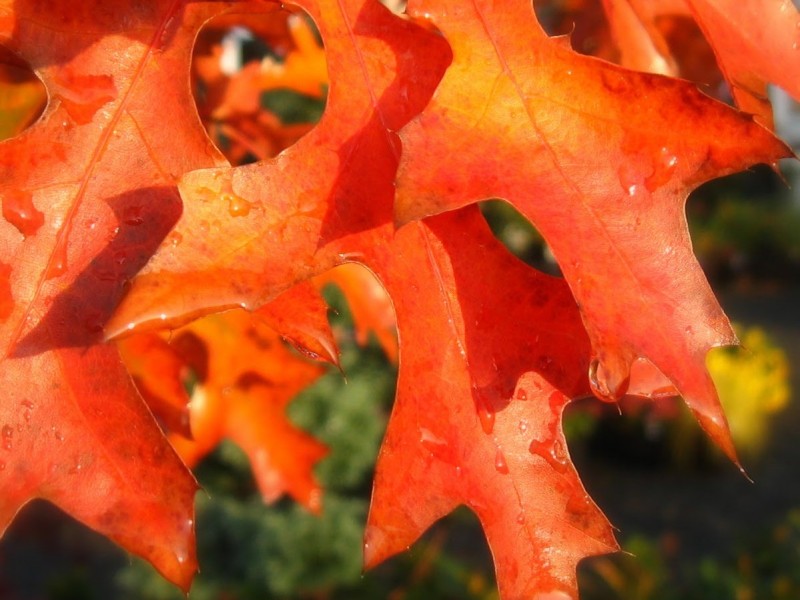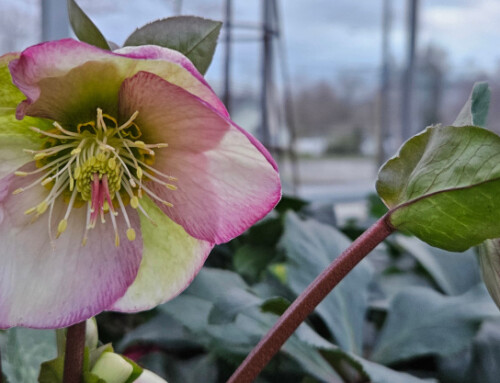By all accounts, autumn has arrived. Although we continue to see unseasonably warm weather, rain has returned, leaves are falling, and plants are beginning to go dormant. Although your mindset for the yard may be one of winding down, here are some easy tasks to accomplish before the season passes you by.
1. October is still a great time to plant shrubs, trees, and perennials as well as colorful, hardy winter pansies. This summer proved particularly challenging in the watering department, and if you lost a few shrubs or trees, don’t feel too bad—you’re certainly not alone.
As you work in your yard this month, use the more regular rains we’re getting to your benefit and replace your lost shrubs and trees. Given the continued warm weather, our soil temperatures remain high enough to allow for good root development. In other words, whatever you choose to plant should get nicely established before winter arrives.
When you plant, keep in mind that while you don’t need to fertilize your plants this time of year, you should treat whatever you plant with a transplant solution like Superthrive. Doing so will encourage healthy root development without forcing additional plant growth.
2. Mid-autumn is the perfect time to plant bulbs for a great show of spring color. Admittedly, in our instant-gratification society, bulbs are a bit of letdown—after all, you’ll leave the nursery with some packages of rather ugly, brown bulbs—but oh, are they worth the wait!
Depending on what types of bulbs you plant, you can look forward to your bulbs multiplying and returning year after year, called ‘naturalizing’. Daffodils (which, by the way, are deer-resistant) are especially good at naturalizing, but many other types will naturalize easily as well. If tulips are your thing, Darwin Hybrid varieties will naturalize the best. Check out the selection of bulbs available at Vander Giessen Nursery and let us help you choose the best, most colorful bulbs for your setting.
When you plant your bulbs, throw some bone meal in the hole before you plant; if you already have existing garden areas or pots with bulbs from last year, now is also the time to sprinkle some bone meal on the soil surface. Simply scratch it in lightly and let the rains wash it into the soil to feed your bulbs as they gear up for next spring.
3. Now is the time to begin preparing your lawn for winter. Our dry summer stopped most moss growth, but as the rains return, you’ll likely see moss begin to reestablish itself in your lawn. If some of the forecasts I’ve seen are right, we’re in for another mild winter, and that makes for ideal moss-growing conditions.
Head off any future moss problems now by applying Espoma Lightning Lime to your yard. Not only will moss problems be minimized, your grass will be better able to utilize the fertilizer you apply. Late this month or sometime next month—after your last mowing of the year—feed your lawn with Scotts Turf Builder Winterguard to keep your grass healthy through winter and ensure a quick green-up in spring.
4. Keep your winter and trailing Cool Wave pansies looking their best with a couple feedings of Jack’s Classic Petunia Feed this fall and winter. While formulated for petunias, this fertilizer has the extra iron pansies need to keep dark green leaves and large flowers. Don’t worry about feeding as regularly as you do your summer flowers, but if you remember to fertilize even once a month, you’ll see a marked improvement in how your plants look.
As you begin to put your yard to bed this month, take the opportunity to plant for spring and keep your yard looking its best—and enjoy the chance to savor autumn’s beauty!








Leave A Comment